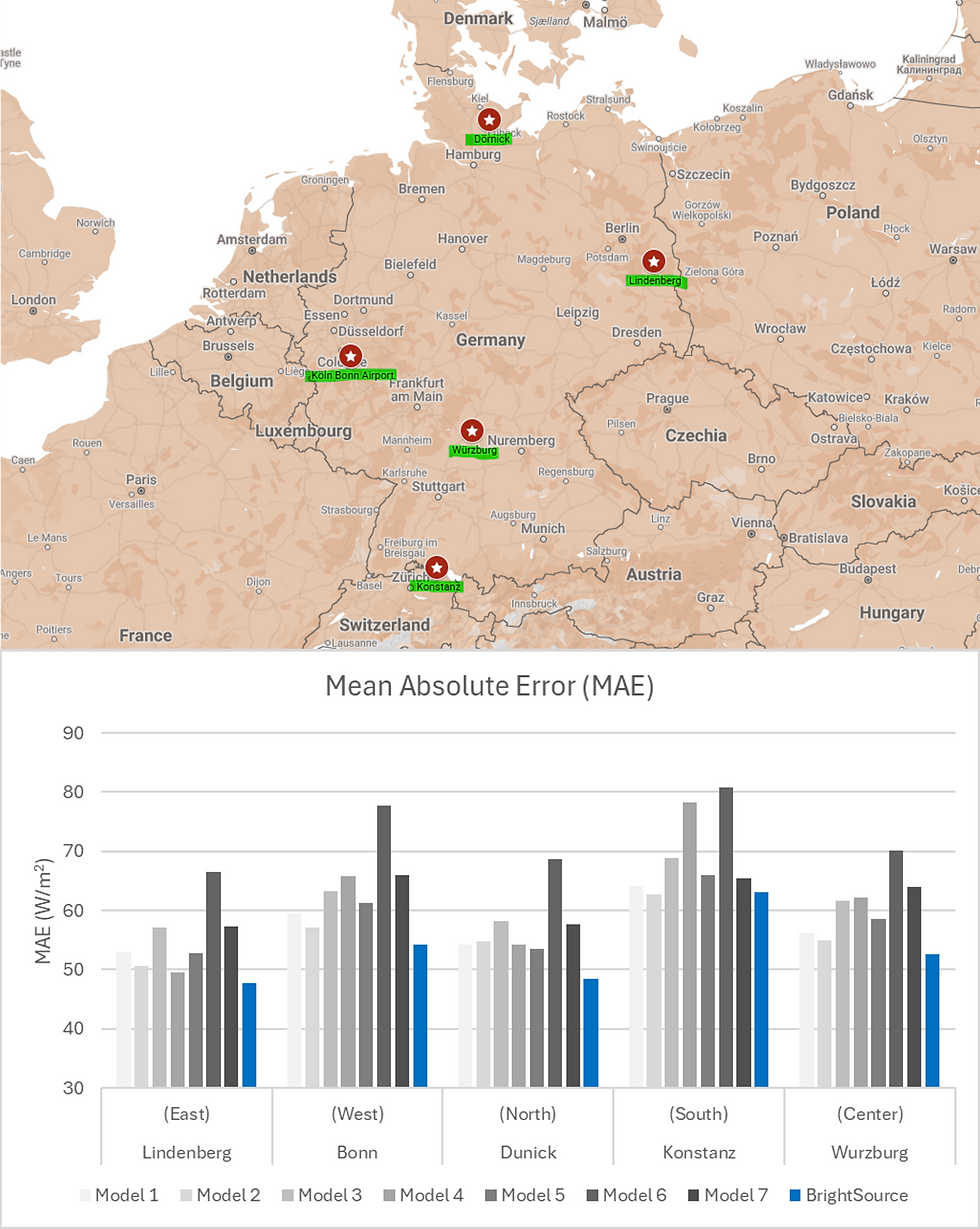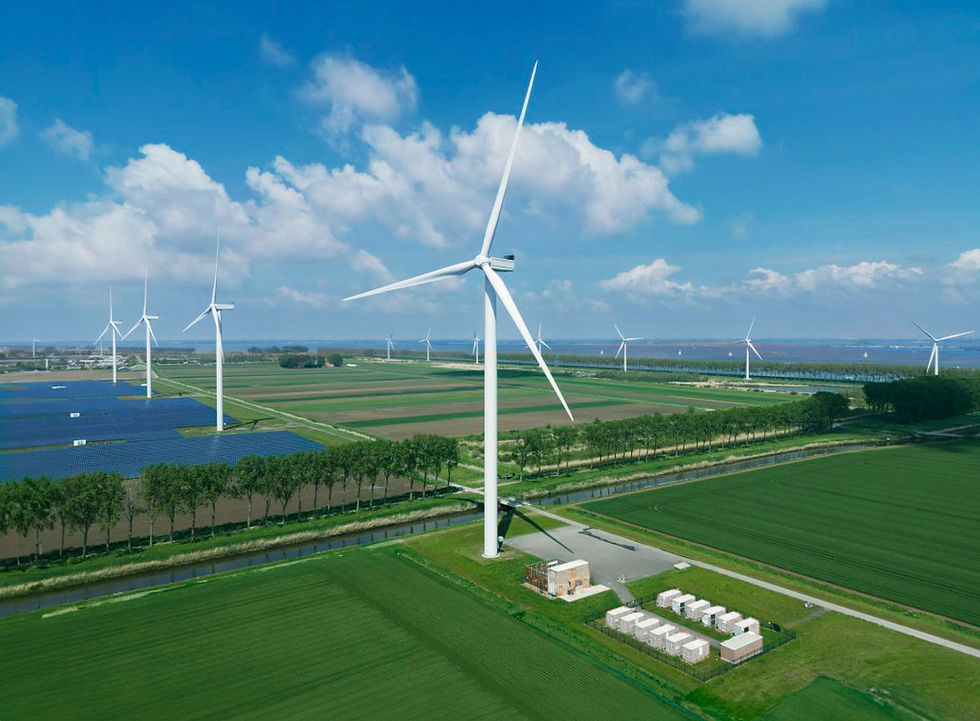Why Accurate Insolation Forecasting Matters
- elegy21
- Jun 15
- 4 min read
Updated: Jul 7
Harnessing the power of precision: Comparing models and proving performance in solar forecasting

Accurate short-term and day-ahead weather forecasting is critical for the reliable operation and market integration of utility-scale renewable energy systems. This study presents a hybrid forecasting framework developed through operational experience with Concentrated Solar Power (CSP) plants, combining physical modelling with machine learning techniques. The system integrates satellite imagery, aerosol data, and regional calibration to enhance forecast accuracy. Benchmarking against global and regional models (e.g., GFS, ECMWF, ICON) shows improved performance across multiple geographies and time horizons, with notable gains in complex weather environments. The model accounts for CSP-specific operational dynamics, such as thermal storage and ramp constraints, while remaining applicable to PV forecasting. Results suggest that high-precision forecasts can reduce balancing costs, support market participation, and improve overall grid reliability.
The Value of High-Precision Weather Forecasts
For renewable energy producers, weather forecasts play a key role in predicting near-term power output and making informed decisions about bidding into day-ahead markets. Inaccurate predictions can lead to overcommitment, underutilization, or costly energy balancing.
According to the International Energy Agency (IEA), forecast errors increase the cost of system balancing by €1.5–4/MWh for variable renewables in high-penetration systems.
In Germany's market, day-ahead forecast errors for solar PV can contribute up to €500 million annually in balancing costs when penetration exceeds 30% of total generation (Fraunhofer ISE, 2020).
Unlike traditional weather models that rely solely on general atmospheric dynamics, our system:
Incorporates satellite imagery and aerosol data, providing real-time, high-resolution visibility into changing sky conditions.
Blends physical models with machine learning, calibrating forecasts based on regional data and historical site behavior. For example, combining Numerical Weather Prediction (NWP) with ML models (e.g., LSTM, XGBoost) reduced 1–6 hour solar forecasting Median Absolute Error (MAE) by 15–40% in multiple studies, including NREL's Solar Forecasting 2 program.
Leverages CSP expertise, ensuring that forecast models align with the operational needs of large-scale renewable energy plants.
Benchmarking Performance: BrightSource vs. Leading Models
To put our model to the test, we benchmarked its performance against several global and regional forecasting systems, including GFS, ECMWF, ICON, and Smart Persistence models. Forecast horizons ranged from short-term (15 minutes to 6 hours ahead) to next-day (hourly resolution). The results show:
2-hours ahead GHI Forecast (desert area):
BrightSource model achieved a Median (MAE) of 38.4 W/m², outperforming other standalone models.
Next-Day GHI Forecasts (desert area) (01/2025 - 03/2025):
BrightSource model achieved MAE of 63.5 W/m², outperforming other standalone models (67.6 W/m² - 70.3 W/m²).
European Validation (various regions in Germany, see Fig. 1):
BrightSource's model achieved the lowest MAE at 47.7 W/m², outperforming all standalone global models.
High-resolution inputs and intelligent blending of satellite data with regional models proved especially effective in complex weather environments, such as southern Germany’s mountainous regions.

Improved weather forecasting contributes to greater grid stability, optimized energy dispatch, and reduced costs for balancing supply and demand.
CSP Experience Matters
Forecasting for solar PV is challenging—but forecasting for CSP, where thermal inertia and storage must be considered, raises the bar even higher. For example, studies (e.g., Fernandez-Reche et al., 2019) show that energy yield prediction for CSP with thermal storage can deviate by up to 15% if weather dynamics are not properly accounted for. Thermal ramping and DNI fluctuations significantly affect dispatch strategies. Forecasting errors for Direct Normal Irradiance (DNI) greater than ±50 W/m² can lead to noticeable dispatch errors in tower CSP systems [(IEA Task 16, 2021)].
That’s why BrightSource’s extensive experience with CSP plants sets us apart.
By understanding the operational sensitivities of plants like Ivanpah and Ashalim, we've designed a forecasting platform that accounts for the thermal dynamics, ramp rates, and dispatch strategies unique to CSP — all while delivering value to PV operators as well.
Business Impact: Better Forecasts, Bigger Value
So, what does this mean for utilities, generators, and grid operators?
Lower integration costs: With better forecast accuracy, renewable energy becomes easier and cheaper to integrate into existing grids. For example, in California ISO (CAISO), better wind and solar forecasting resulted in $3.6 million/year in savings on average between 2012–2017 (CAISO Renewable Integration Report, 2018).
Improved market performance: Accurate day-ahead forecasts enhance bidding strategies in energy markets. NREL’s Solar Forecasting 2 program found that reducing MAE in day-ahead solar forecasts by 15–20% can increase revenue for utility-scale PV plants by up to 5–8%, due to better bidding strategies and reduced penalties (NREL, 2021).
Greater energy reliability: Fewer surprises mean fewer costly balancing actions and more predictable operations. According to the IEA, poor short-term forecasts can increase the cost of reserve activation by up to €5–10/MWh during high volatility periods.
The Road Ahead
At BrightSource, we’re committed to pushing the boundaries of weather forecasting. With ongoing improvements in satellite integration, aerosol modelling, and machine learning calibration, our models are only getting smarter.
Get in touch to discover how to optimize your bidding strategies and boost profitability with our EMS-ETRM solutions.



